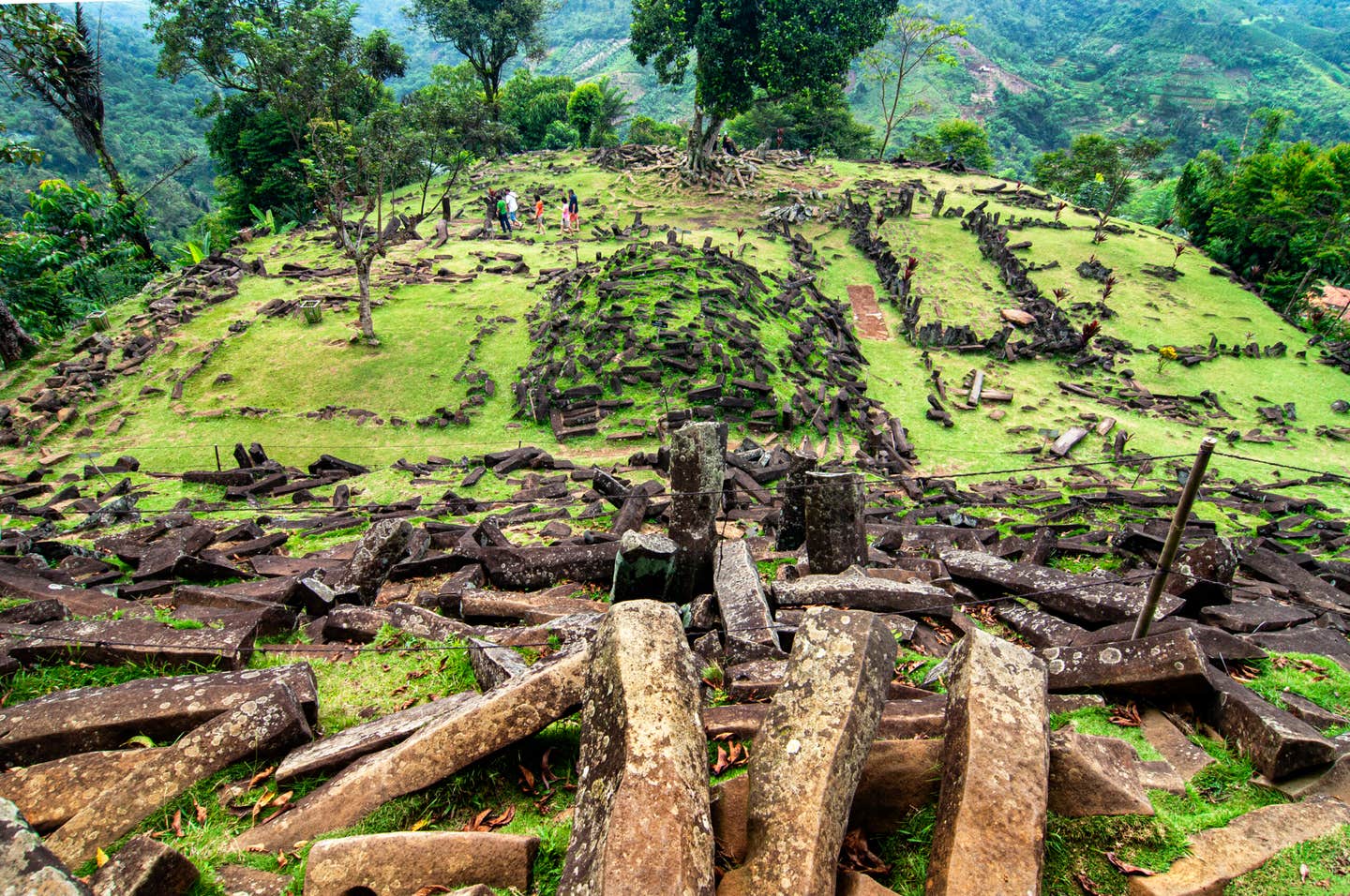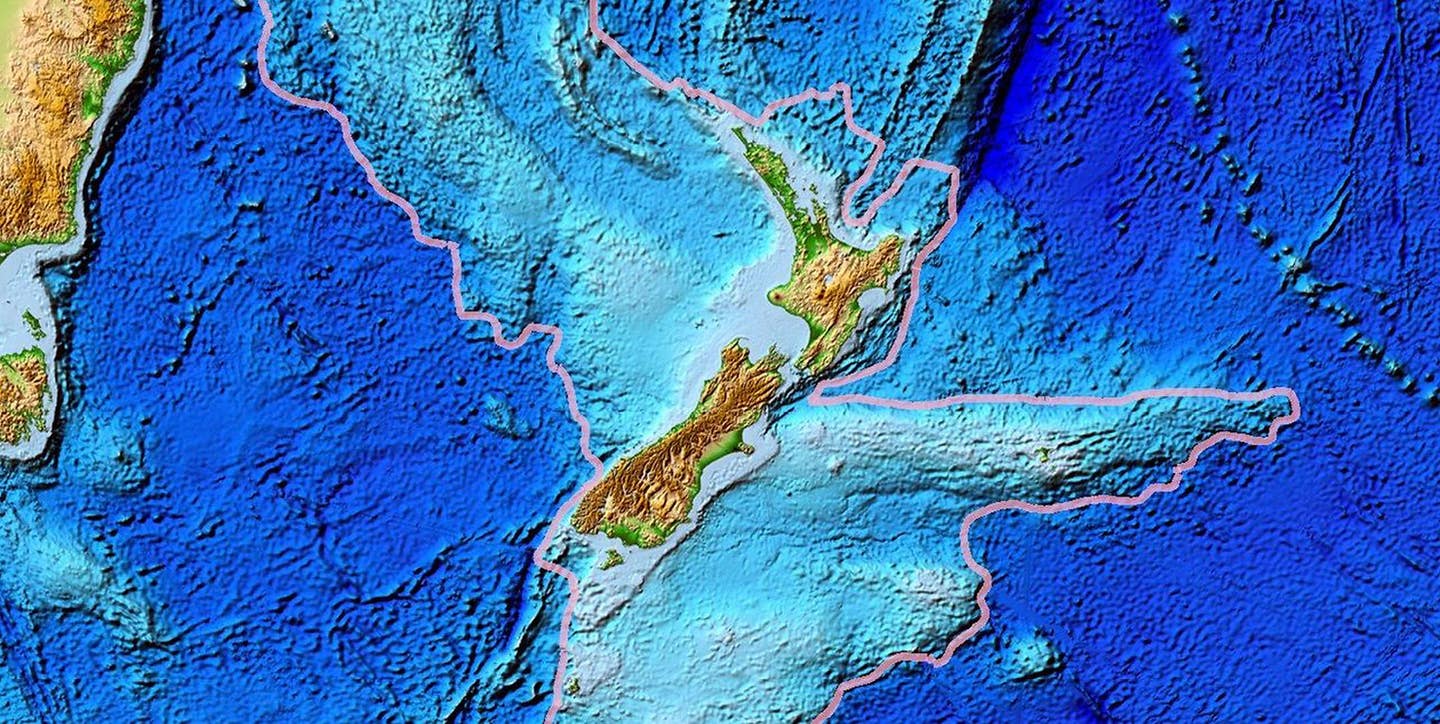Researchers found the world’s oldest pyramid hidden in Indonesia
Known as Gunung Padang, or the “mountain of enlightenment”, this enigmatic structure may be the oldest pyramid on Earth.

A giant underground pyramid hidden beneath a hillside in Indonesia far outdates Stonehenge or the Giza Pyramids and may come to rival the oldest megalithic structures ever built by human hands. (CREDIT: CC BY-SA 4.0)
Beneath the rolling hills of West Java, Indonesia, lies a site that could challenge the very timeline of human civilization. Known as Gunung Padang, or the "mountain of enlightenment" by the local Sundanese people, this enigmatic structure may be the oldest pyramid on Earth. If verified, its origins would predate not only the great Pyramids of Giza but also Stonehenge, pushing back the boundaries of architectural history.
As researchers continue their excavations, they uncover more evidence of a megalithic structure that defies conventional historical narratives.
This site stands as a testament to the ingenuity of ancient builders, who, long before the advent of agriculture or known civilizations, engineered an advanced architectural marvel. Its construction raises profound questions about the technological capabilities and societal organization of prehistoric humans.
Gunung Padang has long held cultural significance among the locals, who recognize it as a 'punden berundak,' or stepped pyramid. The carefully arranged terraces leading to its summit suggest an intentional design far more complex than previously assumed. Until recently, however, the true scope of the structure remained obscured beneath layers of earth and vegetation, leaving much of its history shrouded in mystery.
Recent investigations by a team of Indonesian scientists have revealed that Gunung Padang may not be a simple natural hill but a pyramid with a carefully shaped core. Researchers believe the structure was built using the hardened lava flows of an extinct volcano, intricately manipulated to form a stable base. More intriguing still is the possibility of hidden chambers within the pyramid, a prospect that fuels speculation about its original purpose and potential contents.
Using advanced radiocarbon dating techniques, scientists have traced the earliest phases of Gunung Padang's construction back to the last glacial period.
Some estimates suggest it could be as old as 27,000 years, a staggering revelation that, if confirmed, would force a dramatic revision of human prehistory. This dating places it significantly earlier than Göbekli Tepe in Turkey, currently recognized as the world's oldest known megalithic structure.
If Gunung Padang truly predates all known monumental structures, its builders must have possessed an extraordinary level of knowledge and skill. The construction of such an elaborate site challenges traditional views of early human societies, suggesting that advanced engineering and complex social organization existed far earlier than previously believed. These findings could reshape the narrative of prehistoric human achievement, offering insights into lost civilizations that thrived long before recorded history.
This Indonesian site's story unfolded over millennia, with a deep history told in layers of human endeavor. Researchers, including geologist Danny Hilman Natawidjaja from Indonesia's National Research and Innovation Agency, employed advanced methods like core drilling, ground penetrating radars, and subsurface imaging from 2011 to 2015 to probe the site's complexities.
The Phases of Gunung Padang's Evolution
Natawidjaja's team has discovered that the pyramid was built in intricate stages. The oldest section, about 30 meters below the surface, likely dates from between 25,000 and 14,000 BCE.
After a period of abandonment, a resurgence of construction activity around 7900 to 6100 BCE saw the expansion of the core mound with a variety of materials, including rock columns and gravelly soils.
Related Stories
Remarkably, around 6000 to 5500 BCE, these ancient builders seemed to intentionally bury older sections of the site, a practice which raises many questions about their motives and the meanings behind such actions.
The last known phase of Gunung Padang's construction occurred between 2000 to 1100 BCE when builders added the final layers of topsoil and stone terraces that we see today. These terraces, distinctive of a punden berundak, offer the most visible and intriguing evidence of advanced building techniques and long-term cultural significance.
Mastery in Masonry: The Skill of Ancient Builders
The researchers have found that "the builders of Unit 3 and Unit 2 at Gunung Padang must have possessed remarkable masonry capabilities," challenging the conventional view of prehistoric societies as simple hunter-gatherer cultures. This acknowledgment points to a previously underestimated complexity within ancient societies of the region.
The dedication to modifying and reoccupying the site over thousands of years suggests that Gunung Padang was of great importance to the people who built it. This continuity of occupation and enhancement underlines the site's enduring cultural and possibly spiritual significance.
The Journey Ahead: Excavation and Exploration
The heart of Gunung Padang still holds many secrets. Seismic studies have revealed the presence of large hidden cavities and chambers within, with some being up to 15 meters in length and with ceilings reaching an impressive height of 10 meters.
The research team's ambition is to explore these hidden spaces further. They plan to drill into these areas and, upon encountering any chambers, to lower cameras into the depths to illuminate what has been enshrouded in darkness for millennia.
This investigative odyssey at Gunung Padang serves as a shining example of how multidisciplinary approaches—melding archeological, geological, and geophysical techniques—can reveal the grandeur of ancient civilizations. It stands as a testament to the power of technology and collaborative effort in peeling back the layers of time.
With each discovery, Gunung Padang is poised to redefine our understanding of the prehistoric world. It may not only rival but also precede the world's most famous megalithic sites. The narrative of human history may need to be rewritten, with this Indonesian pyramid taking its place as a crowning achievement of human prehistory.
In the years to come, we can expect to hear much more about Gunung Padang as it emerges from the mists of time, revealing its stories and the remarkable civilization that built it. Its legacy, etched in stone and soil, beckons us to ponder the marvels our ancestors were capable of creating long before the wheels of recorded history began to turn.
Note: Materials provided above by The Brighter Side of News. Content may be edited for style and length.
Like these kind of feel good stories? Get The Brighter Side of News' newsletter.
Joseph Shavit
Head Science News Writer | Communicating Innovation & Discovery
Based in Los Angeles, Joseph Shavit is an accomplished science journalist, head science news writer and co-founder at The Brighter Side of News, where he translates cutting-edge discoveries into compelling stories for a broad audience. With a strong background spanning science, business, product management, media leadership, and entrepreneurship, Joseph brings a unique perspective to science communication. His expertise allows him to uncover the intersection of technological advancements and market potential, shedding light on how groundbreaking research evolves into transformative products and industries.



